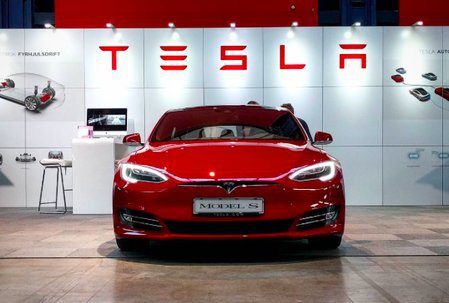 An exhausted-looking Elon Musk told the Tesla Faithful at last night’s shareholder meeting that Tesla built their cars with love. Although not perfect and although Elon-Time was sometimes a little driven by his optimistic nature of “could be” rather than “will be”, they always got there in the end.
An exhausted-looking Elon Musk told the Tesla Faithful at last night’s shareholder meeting that Tesla built their cars with love. Although not perfect and although Elon-Time was sometimes a little driven by his optimistic nature of “could be” rather than “will be”, they always got there in the end.
The Model 3 production figures being a case in point. After a dreadful start to production with assembly lines struggling and inappropriate automation of some tasks that were better handled manually, they had hit 3,500 Model 3s a week and would achieve 5,000 Model 3s by the end of June.
This was achievable – just – with the two existing M3 assembly lines – but a third line would come on-stream this month, and that new line would enable the 5,000 a month to be achieved, easily and reliably into the future.
Model 3 was now (@ 3,500 cars per week), the best-selling midsize car in the US. Period. This was despite there only being one model. (Maybe they should have called it the Model T).
The All Wheel Drive version would start production in 2H18 and the base model at USD35k would begin production by end of 2018 (Elon-Time).
Musk addressed some issues relating to worker safety noting that, although the speed of change had affected safety, the injury rate was still only half of the injury rate in the rest of the US Auto Industry as a whole and half that of Toyota when it owned the same Fremont assembly plant.
Most injuries were due to repetitive strain and workers were being rotated more frequently to mitigate risk. (This raises the question of training for the tasks to which they are rotated to, but Elon didn’t cover that).
He also said that no more capital would be required this year. This comment addresses concerns of some sectors of the financial industry that Tesla was “burning cash”.
Other observers have been more comfortable as the cash was being invested in a platform for future profitable growth, which was prudent business practice.
So, the claim that Tesla would not be needing further cash is good news for the market. Musk pointed out that Ford and Tesla were the only two American car manufacturers that had never gone bankrupt. (Unlike GM).
Another issue raised was quality. The crazy schedules for producing the Model 3 have produced some assembly issues with, for example, panels not aligning on door interiors or part-covers being put on upside down.
These issues have been attributed to less-than-adequate training of workers. As the line settled down and workers gained experience, quality was improving. (Hope that continues as Line 3 opens, with expanded staff).
With insurance, the goal was for a Tesla M3 to be cheaper to insure than a BMW 3 series.
A new network of Tesla body shops was being added to Tesla service centres, with the goal to complete many body shop repairs the same day, due to parts being stored onsite.
Recycling of battery packs – instead of being sent to landfill – would continue to be handled by Tesla as it was the right thing to do and as the battery packs contained valuable metals (Lithium, Nickel, Cobalt, running at $90,000 a tonne currently).
Tesla would aim for 100 per cent recycling and was confident it could achieve that target. This strategy would also reduce costs of each new vehicle.
Some announcements about markets expanded understanding of future volume/capacity. Elon confirmed that China would be the next big thing and that relations with the Chinese government were very constructive.
The Shanghai Free Trade Zone facility would include a Gigafactory as well as a co-located car assembly line and construction would begin very soon. Next would be Europe but the country for the Gigafactory and assembly line had not been finalised yet.
Tesla’s focus with the Model 3 was to catch up on the two year backlog on customer orders (currently around 400,000 customer-orders with up-front deposits of USD1,000).
In order to achieve this goal, it would start to homologate vehicles in foreign markets, principally China and Europe, and that would include the Right Hand Drive versions (Japan/UK/Australia).
It would also concentrate on launching the AWD and base variations of the Model 3.






